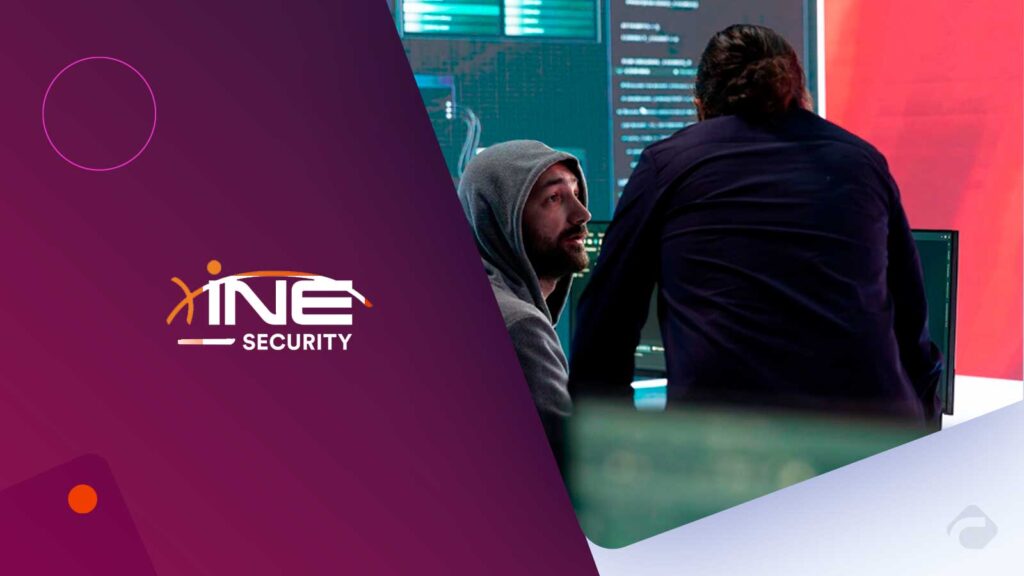Introduction – The Invisible Lock That Holds Billions
Think about a vault holding billions of dollars. No steel doors. No armed guards. Just code – encrypted lines of trust – protecting everything in there. That’s the crypto industry. Unlike traditional finance, where there are regulators, insurance, and physical security continuing to protect money, in crypto, you have private keys. Lose it or have it stolen? Gone.
The reality is, cybersecurity is the only thing separating criminal cyber wealth and their perchance. If you do not trust cybersecurity, crypto is not a revolution of finance – it is a red Ferrari without brakes. Ok, it looks fast, and it looks exciting, but one wrong turn, and you will die.
This article is all about why cybersecurity is not just vendor risk management; it is simply foundational to the thriving crypto industry. We will cover what it means to lose trust in crypto, from exchange hacks to regulatory interruptions to future-proofing, but ultimately, we will explore why trust in crypto starts and stops with cybersecurity.
The Crypto-Cybersecurity Connection
Cryptocurrency is built on decentralization as a way to remove the middleman and clearly give people control over their own money. While the openness aspect of crypto is, arguably, its greatest advantage, it also has significant risk involved. Crypto networks are based on distributed ledgers where individuals are part of the network and the ledgers; they are not insured, and there are no regulatory guardrails. This is a sharp contrast to banks, which operate on a centralized system with some regulatory and insurance protections for the client.
This idea aids innovation and opportunities for people, but it also creates a lot of opportunities for criminals. In 2022 alone, Chainalysis reported that over 3.8 billion of crypto was stolen. Most of the thefts occurred through cross-chain bridges, wallets, and exchanges. The Ronin Bridge hack, worth over $600 million stolen made headline news well beyond the crypto community!
While the numbers are alarming, there is also something that we as an industry must contend with around crypto: the blockchain is secure, but the ecosystem around these ledgers (wallets, exchanges, smart contracts) is where the fractures occur. The potential for the technology is certainly the;e, however, with each new entry point that is easy to access, it provides another entry point for criminals.
Think of this like building a skyscraper of the future. The base (blockchain) is solid as stee, and cannot be broken. But if the windows (wallets) are open, or the elevators (exchanges) are improperly designed, anyone can access them.
In order for crypto to build long-term credibility with businesses, regulators, and investors alike, cybersecurity must be in everyone’s ecosystem at all levels. Without it, the risk of a breach that, regardless of how high-tech a blockchain innovation, should not last longer than until he next breach occurs.
Essential Cybersecurity Pillars for the Crypto Space
If we think of the entire crypto ecosystem as an impenetrable digital fortress, cybersecurity pillars are the walls, gates, and guards that keep it all secure. Without these pillars, the crypto ecosystem inevitably crumbles under the weight of perpetual and increasing cyberattacks. Let’s take a look at the essential pillars upon which crypto security rests.
1. Encryption & Key Management
As everyone in crypto knows, private keys are the crown jewels of crypto. Whoever owns those private keys has access to the assets. Encryption and hardware security modules (HSMs) allow private keys to be protected from being guessed, copied, or stolen. However, weak key management processes remain one of the most significant risks. For example, in 2018, after the CEO of QuadrigaCX died unexpectedly and the keys for over $190 million worth of cryptocurrency were lost forever because no one else had access to them.
2. Secure Wallets
Wallets serve as the digital access point to crypto assets. Hot wallets (ie, online) are more user-friendly, but easily hacked. Cold wallets (i.e., not connected to the internet) require a trade-off of ease of access for security. Hardware wallets like Ledger or Trezor are more widely trusted because they significantly decrease the risk of private keys being compromised on the internet through isolation from online transactions. Each individual is expected to maintain strong wallet hygiene (e.g., using multi-factor authentication, updating wallets regularly, and backing up securely), contributing to the first line of security for investors.
3. Smart Contract Audits
Smart contracts are behind decentralized finance (DeFi), but a single mistake in the code could cost millions of dollars. You remember the DAO hack in 2016; the flawed contract code in that attack cost about $60 million. Now, third-party audits, bug bounties, and formal verification processes serve as “crash tests” used to establish insurance policies for smart contracts to ensure they can operate without risk when fielded.
4. Exchange & Infrastructure Security
Cryptocurrency exchanges are considered banks for digital currency; they are popular and a way to make money. Well-known hacks, or breaches, such as Mt. Gox (2014) and Coincheck (2018) demonstrate that the lack of user infrastructure security could hamstring user trust in a matter of hours. There are many best practices taken today for exchanges to consider, internationally recognized standards of security practices, such as cold storage level reserves, multi-signature level of transactions, real-time threat detection and monitoring, and compliance frameworks like the SOC 2 or ISO 27001.
5. User Awareness & Training
85% of organizations hold their CIO or CISO accountable for cybersecurity, and only 12% of boards have a cybersecurity committee, as per Gartner.
Cybersecurity only matters if people don’t fall for phishing or social engineering. Training users to identify fake links and not to share private keys is not optional; it is mandatory.
The Greatest Cyber Perturbations Ahead in Crypto in 2025
If 2024 proved to be a test, 2025 is poised to be the year that cybercriminals “go all in” on the crypto markets. We’ve seen the stakes grow, the attacks get more intelligent, and victims come into their attacks poorly prepared. Let us take a look at the glaring threats that are actively looming in the sector.
1. Phishing 2.0
Traditional phishing has moved to Phishing 2.0. Attackers have leveraged AI generative emails, deep fake videos, and realistic voice cloning to deceive investors into handing over their keys or accessing a fake platform. Experienced crypto users will have a tough time distinguishing legitimate messages from AI-forged scams.
2. Ransomware in Web3
The gangs of ransomware are shifting their focus from traditional businesses and now launching their attacks off the blockchain by targeting crypto wallets and exchanges directly. Ransomware works like this: an actor encrypts important pieces of your infrastructure and demands a ransom payment in cryptocurrency. The challenge with cryptocurrency is that once you transfer the payment, they are far less identifiable, given that crypto is borderless.
3. DeFi Exploits
Decentralized finance (DeFi) is still like the Wild West. Vulnerabilities in smart contracts, cross-chain bridges, and liquidity pools have now become the new gold mine for hackers. The recent $320 million Wormhole bridge hack is representative of how weak DeFi infrastructure remains.
4. Insider Delays
Sometimes the threat is from within. Rogue employees or developers leaking data or stealing funds, or compromised partners; nasty surprises to come while scaling crypto firms globally over increasing levels of sophistication, and increased insider-facilitated breaches are anticipated to rise.
5. AI Attacks
Hypocritically, the same AI systems used to secure exchanges are the same AI tools that criminals use. From programs using automated vulnerability scanning and adaptive malware that learns an organization’s defenses, the bar has been raised significantly for cybercriminals utilizing automation and AI in 2025.
Recommended: Trend Micro Unmasks Global “Task Scam” Industry
Regulatory Changes Catching Up to Crypto Security
Amidst the decentralized, dynamic, largely unregulated advantages the world of crypto had for many years, it was the attitude of the Wild West: fast-moving, free from regulations, and most importantly, available for fraud, hacks, and rug pulls to spur on the fast money. This is all beginning to change by 2025 as rules come in from governments and global regulators, bringing opportunities for innovation halted until governments catch up, established order to safeguard the interests of individuals to invest as the world needs some stability.
Global Standards Underway
The Financial Action Task Force (FATF) is encouraging nations to get onside with putting into place an anti-money laundering (AML) and a Know Your Customer (KYC) framework developed and discussed during the G20 meeting. The EU’s regulations of crypto – MiCA is readying itself to move off the global stage into operations with registrations commencing in 2024 to establish some baseline of standards for REGULATING crypto globally – stablecoins, exchanges, token creators, wallet providers.
U.S. and Asian Strategy
In the U.S., the SEC is becoming more aggressive with enforcement while still pondering crypto classifications at the federal level. In Asia – notably Singapore and Japan – the aim at have embraced security while establishing regulatory ecosystems that have a level of balance not to disrupt innovation.
The Impact of Compliance
These changes mean exchanges and wallet providers are now going to need to have a greater focus on cybersecurity, have real-time monitoring systems in place, and report on suspicious activities. While some people see regulation as stifling creativity, more and more people see it as the price of admission for mainstream adoption. Without trust, crypto cannot scale, and regulation helps build trust.
The Road Ahead
By 2025, compliance will not be optional – it will be a matter of survival. Projects that cannot comply with security and reporting obligations will be delisted or shut down. The winners will be those who can innovate whilst being transparent and secure.
Best Practices for Crypto Investors and Firms Regarding Cybersecurity
In the cryptocurrency space, security is not something you can just “set it and forget it”. Threats are constantly evolving; therefore, people, both individuals and organizations, need to evolve with them. The good news is that you can build some strong habits and get good tools to significantly reduce your risk.
For individual investors and people, the basics are mandatory:
- Use hardware wallets instead of keeping your assets on exchanges.
- Enable multi-factor authentication (MFA) on all accounts.
- When accessing wallets, do not connect to public Wi-Fi, and never share your private keys.
The standard for crypto businesses is even higher. Obviously, exchanges and other DeFi entities should use cold storage platforms; conduct regular penetration tests; and have real-time threat monitoring. Additionally, crypto businesses should also provide disclosure so people can put some confidence in your crypto entity. Publicly available audits and offering proof-of-reserves reporting can help instill trust.
People also tie all of these things together. As many attacks involve exploiting human error rather than bad code, regular security training for staff and security awareness campaigns for users can help prevent these attacks from getting underway in the first place.
In the end, whether you have $500 or $5 billion in crypto, it’s the same principle: security first and profits second. Without proper cybersecurity, there is no crypto future, only risks.
Cybersecurity investment across the globe is going up and rising fast. Sources expect that investment in information security and risk management will increase from $193 billion in 2024 to $213 billion in 2025.
Alternatively, the global cybersecurity market opportunity can be as high as $1.5 – $2 trillion; penetration in the market is maybe 10%, according to McKinsey.
There will be more investment and innovation with rising threat levels until we make up the protection gap.
Recommended: What is Quantum Cryptography in CyberTech?
The Contributor Regulation Has In Crypto Safety
While decentralization is a key element to the crypto community, regulation is becoming as important a factor to the value of security. Almost every government in the world is now pursuing KYC (Know Your Customer) and AML (Anti-Money Laundering) regulations to reduce fraud and scams; KYC and AML regulations seem constrictive at times, but they are tools to shield users from heinous losses and engagement and maintain market integrity.
Regulation is a balancing act, trying to find a way to install guardrails while allowing room for creativity; just as regulation is needed to provide clarity and assurance to institutional investors, so too is it needed to help everyday investors feel secure in an otherwise uncertain crypto space. In simple terms, if the crypto space experiences a great smart regulation framework, it will not help weaken the space, and it will actually strengthen the space for the ability of survival in the long run.
Conclusion
In terms of its future, the crypto industry depends upon how seriously it takes cybersecurity today. It seems the threats and risks associated with crypto are evolving as quickly as the technology. Whether it is phishing emails and fraudulent exchanges or deepfakes and employee risks, both investors and businesses need to be part of the defensive fabric being developed from best practices (like hardware wallets, MFA, cold storage, and audits) matched with the smartest regulation to make the ecosystem’s shift from an exploited hacker’s playground to a trusted financial frontier.
Consider the following: security is not really about securing digital coins, but rather about securing confidence. And without confidence, cryptocurrency cannot scale out to its true implication.
FAQs
1. In 2025, what is the largest cybersecurity threat to crypto?
Phishing and social engineering remain the biggest threats, but there are many emerging scams being backed by very sophisticated AI.
2. How secure are hardware wallets?
They are very secure since the private keys are always offline and not as exposed to attacks as wallets provided by exchanges.
3. Do regulations actually have any hope of stopping hacks to crypto?
There are no regulations that can stop hacks. But regulations will help promote transparency, audits, and due diligence, which will limit the opportunity for large-scale criminal fraud in both head and sub wallets.
4. What can businesses do to protect user funds?
The best approach is to use cold storage for user funds, balanced with continuous monitoring, penetration testing, and verification of sourcing via transparent proof-of-reserves reporting.
5. Is cybersecurity just a concern for large investors?
No. Hackers go after anyone. Copies of wallets can be drained if any basic security measures are bypassed.
For deeper insights on agentic AI governance, identity controls, and real‑world breach data, visit Cyber Tech Insights.
To participate in upcoming interviews, please reach out to our CyberTech Media Room at sudipto@intentamplify.com.







